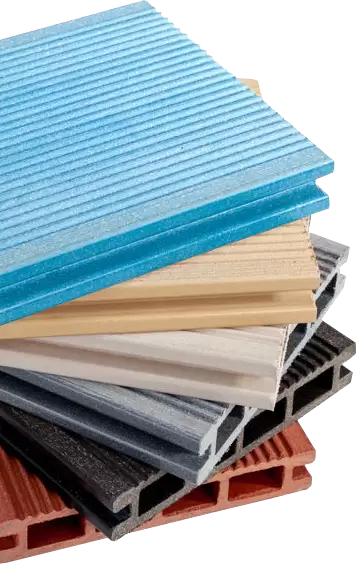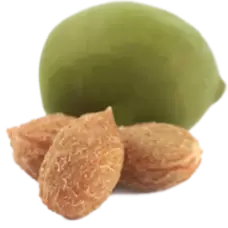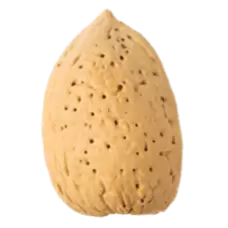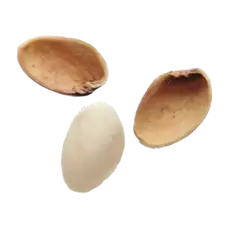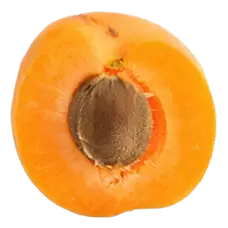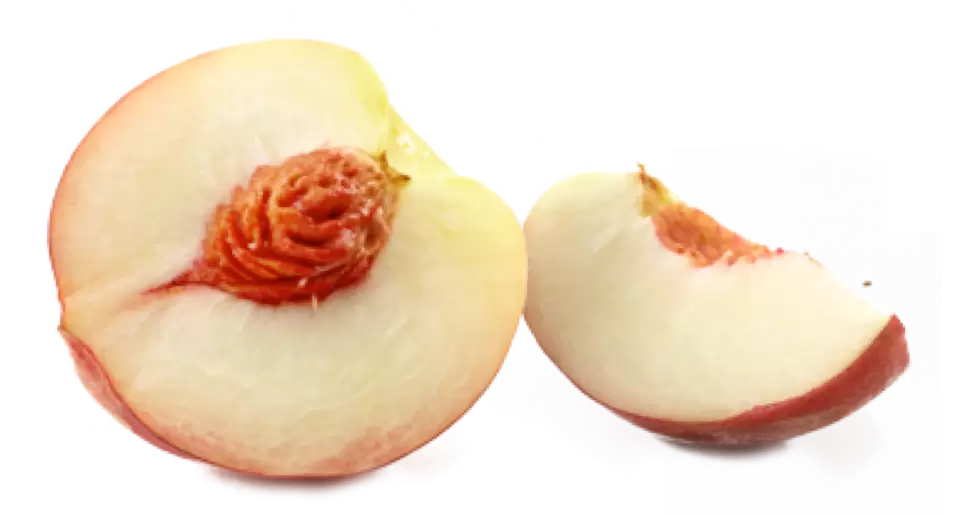Bio-Additives for Rubber Composites and Biodegradable Rubber
BioPowder.com provides innovative, bio-based and fully sustainable fillers for rubber, rubber composites and biodegradable rubber. Versatile micro-powders can enhance the performance parameters of tyres, shoe soles, hoses and other rubber items while boosting their recyclability. Countless bio-additives have been tested on the market: from corn starch over flax, hemp up to bagasse. All of them come with fair properties, however, the BioPowder.com team has developed an enhanced alternative – both in technical and environmental terms.
Synthetic Rubber as a Major Source of Microplastics
Traditionally, synthetic granules, mainly from recycled rubber, have been used for compounding. On one hand, this has helped reduce rubber waste, whereas on the other hand it has not solved the problematic of microplastics. By far the largest amounts of microplastic, i.e. microscopic particles of non-biodegradable polymers, originate from the abrasion of tyres. In other words, every vehicle causes environmental damage simply by its contact with the road surface. To a minor extent, the same is true for shoe soles made of synthetic rubber. Humans walking down the road leave microscopic particles on the asphalt. Ultimately, this generates thousands of tons of microplastic that end up in the waters and in our food chain.
Sustainable Fillers for Biodegradable Rubber and Rubber Composites
At BioPowder.com we help manufacturers of rubber composites and biodegradable rubber replace synthetic and harmful additives by providing effective, bio-based alternatives. Our micronized powders, mainly made from olive stones, are fillers, ultra-resistant fibres and texturizers for any solid rubber composite. More precisely, we recommend our functional powders for the following uses:
As fillers for rubber and additives used in rubber compounding: to increase hardness and resistance, especially in solid tyre formulations. Our powders are 2-3 times harder than most other plant-based fibres (3.5 on a Mohs scale) and withstand temperatures up to 200 °C. In natural or biodegradable rubber formulations, olive stone powders transform semi-liquid caoutchouc into a sturdy solid. In synthetic rubber composite formulations, the same favourable effects can be achieved by replacing conventional rubber additives such as carbon black or silica.
As crosslinking agents: especially suitable for elastomer formulations with a relatively low elasticity. Thanks to their reactivity, BioPowder.com powders can enhance molecular bonds and consequently improve elasticity and strength of many rubber compounds.
As reinforcing fibres: most tyre formulations are reinforced elastomers, i.e. rubber composites consisting of a polymer and a reinforcing agent or fibre. Using natural reinforcing fibres offers enormous potential for environmental innovation. Especially tyre treads can benefit from our fillers for rubber to enhance their resilience and abrasion/wear resistance. Also learn more about our sustainable polymers.
As texturizers for rubber compounds: our additives used in rubber compounding come in micron ranges tailored to your specific requirements. Fine powders are ideal for dispersion whereas medium and large grain size ranges add a visible, granular texture. Surface modeling, for example for anti-slip effects in rubber composites, is made easy.
BioPowder.com functional fillers for rubber can fulfil two or more of the above functions at the same time. Different micron size ranges, ways of integration in the rubber matrix and doses can create a variety of effects, resulting in a compound with optimized parameters for many applications.
Frequently Asked Questions (FAQ): Rubber Additives and Biodegradable Rubber
How long does it take for natural rubber to biodegrade?
Natural rubber degrades in a microbially rich, moist soil over the period of 1-2 years. Recent studies have shown that only around 35% of all rubber products consist of natural rubber. The larger part of rubber components is in fact made of synthetic rubber or so-called rubber composite materials. Those synthetically manufactured compounds are not biodegradable rubber and require chemical recycling. BioPowder.com aims at facilitating this process by providing fully natural rubber additives made from renewable side stream resources.
What are additives in rubber?
Like most industrial materials, rubber is not used in its pure form. It is often mixed with certain chemicals, better known as additives, to improve its physical properties and performance characteristics. These additives play several critical roles, such as enhancing the overall quality of the rubber, improving durability, and resistance against various environmental elements like UV rays, heat, and harsh chemicals. Rubber additives, divided into different categories – such as fillers, plasticizers, processing aids, accelerators, and retarders – are meticulously selected based on the intended use of the final rubber product. For instance, carbon black, a common filler, enhances the strength and endurance of the rubber, whereas plasticizers like oils or waxes are used to increase the flexibility of the rubber. While traditional rubber and associated additives can be non-environmentally friendly, the industry has seen a shift towards more sustainable materials. One such innovation are biodegradable rubber additives from BioPowder.com: This type of rubber additives, made from natural, renewable resources like olive pits, degrades naturally over time, reducing its impact on the environment.
Which component is added to rubber to improve its quality?
The chemical industry provides thousands of additives used in rubber compounding. When developing a rubber compound, the choice of additives depends on the desired mechanical properties as well as on environmental and financial considerations. Most rubber composite materials are designed to ensure high levels of tensile and impact strength as well as stability and thermal resistance. In biodegradable rubber, natural fibres and micronized powders are often added as reinforcing fibres and texturizers. The high particle hardness of BioPowder.com rubber additives can in addition boost strength and abrasion resistance. Also, textured surface effects can be created when the rubber composite is enriched with natural powders of a larger grain size.
Why are fillers used in rubber compounding?
Mainly for reasons of texture, mechanical properties and bio-based nature as explained above. There is also a financial aspect: fillers for rubber can help reduce the overall cost of the rubber composite by simply adding mass. In recent times, however, the industry has moved away from synthetic, inert fillers towards more functional and biodegradable fillers for rubber compounds. Our line of fine powders caters to innovative rubber additives suppliers wishing to achieve a maximum of properties with mostly natural functional fillers for rubber.
Is there a way to make rubber biodegradable?
Apart from using natural rubber as a basis, we recommend choosing fillers for rubber that are biodegradable or even compostable. To facilitate the development of high-performance rubber composite solutions, BioPowder.com has developed functional powders with multiple benefits such as reinforcement, texture, light weight, flexible particle diameter and - if needed - coated or hydrophobic surface properties.
How does rubber biodegrade?
Rubber biodegrades through a process that involves both biotic and abiotic factors. Biotic factors refer to living organisms such as microbes and fungi, whereas abiotic factors pertain to environmental aspects such as humidity, temperature, and sunlight exposure. Over time, these elements break down the molecular structure of rubber, leading to the disintegration and eventual decomposition of the rubber material. This process, however, is substantially slow due to the high molecular weight and crystalline structure of natural rubber, causing it to take several years or even decades to biodegrade completely. In the pursuit of sustainability, the development and use of biodegradable rubber have gained significant traction over recent years. This rubber alternative contains specific rubber additives that accelerate the rubber's biodegradation process. When exposed to the right conditions, biodegradable rubber starts breaking down at a faster rate, thereby reducing its lifetime in the environment. Ultimately, biodegrading rubber is a complex phenomenon that hinges on several factors, from the rubber's unique composition to the specific environmental conditions. Understanding this process is key to developing more sustainable rubber alternatives or rubber additives that encourage faster decomposition. As BioPowder.com, we are committed to furthering research and development in the realm of biodegradable raw materials.
What are fillers in rubber compounding?
Fillers in rubber compounding are vital ingredients utilized to enhance the physical and mechanical properties of rubber products. These inclusions serve not only to augment the bulk of the rubber, thereby reducing costs, but also to improve strength, heat resistance, durability, and resilience. Typically, a rubber compound may contain up to 50% of fillers, executing a pivotal role in rubber manufacturing. The selection of appropriate fillers significantly impacts the overall product performance. Two principal types of fillers are used in rubber compounding: reinforcing fillers like carbon black and silica, and non-reinforcing fillers such as calcium carbonate and talc. Interestingly, innovative advancements in the industry have led to the emergence of eco-friendly alternatives for these traditional fillers. As an operator in this domain, BioPowder.com offers additives made of olive stones as a natural, sustainable, and biodegradable ingredient in rubber compounding. This biodegradable rubber not only meets the industry's physical and mechanical requirements but also aligns with global environmental conservation efforts.
In conclusion, while fillers in rubber compounding are critical to achieving desirable product traits, diversifying the choice of fillers, particularly towards sustainable alternatives, offers significant both economic and ecological benefits. BioPowder.com continues to contribute to such innovations, providing viable solutions for a greener future of rubber compounding.
What are the additives used to modify natural rubber?
To enhance the properties of natural rubber, several additives are incorporated into the fabrication process. These additives encompass vulcanizing agents, accelerators, activators, antioxidants, and fillers. Vulcanizing agents, such as sulfur, ignite a chemical reaction to improve rubber's elasticity and strength. Accelerators, like zinc oxide and stearic acid, expedite the vulcanizing process. Activators work in unison with accelerators to enhance vulcanization. Antioxidants, like p-phenylenediamines and quinolines, are necessary to prevent the oxidation of rubber, thereby enhancing its lifespan. Fillers such as carbon black or silica are used to enhance the toughness, abrasion resistance, and tensile strength of rubber. Indeed, the usage of these additives is integral in the manufacturing of a specific type of natural rubber known as biodegradable rubber. This environmentally friendly material is seeing increased adoption due to its ability to decompose naturally over time. From the perspective of BioPowder.com, a producer of rubber additives derived from olive pits, adding additives signifies a strategic approach to evolve the properties of natural rubber to meet diverse application needs, while also maintaining a commitment to environmental sustainability.
Is natural rubber environmentally friendly?
Natural rubber, derived from the sap of the Hevea brasiliensis tree, is indeed known for its eco-friendly attributes. Unlike synthetic rubbers made from petroleum, it's a renewable resource, providing sustainability benefits. The production of natural rubber encourages the growth of these trees, acting as carbon sinks and contributing to the reduction of greenhouse gas emissions. A crucial aspect that underlines the environmental friendliness of natural rubber is its biodegradability. In specific conditions, the material breaks down over time, minimizing solid waste disposal problems associated with synthetic counterparts. This characteristic makes it a fit candidate to be called a biodegradable rubber, aligning with global efforts to decrease pollution and enhance eco-sustainability. However, it's important to note that the eco-friendliness of natural rubber also depends on how it's harvested and processed. Ensuring responsible sourcing practices and minimizing the use of damaging chemicals during manufacturing further enhances the environmental benefits of natural rubber. To conclude, while natural rubber has inherent environmental benefits like renewability and biodegradability, responsible sourcing and processing practices are crucial to truly deem it environmentally friendly in its complete lifecycle. At BioPowder.com, we offer biodegradable rubber additives for rubber composites improving sustainability and performance parameters.
Is rubber biodegradable in water?
When it comes to the matter of whether rubber is biodegradable in water, an unambiguous response would be that conventional rubber cannot readily degrade in water. Rubber is made from polymers of isoprene, which are robust chains that resist degradation on exposure to water. Hence, under normal conditions, rubber materials like tires and latex gloves, will not biodegrade in water or even in a landfill. Nonetheless, the industry has seen advancements that have led to the creation of biodegradable rubbers. These are carefully engineered materials that can break down under certain conditions. In general, these would require specific microbial action and aren't designed to degrade in any setting. Certainly, this doesn't imply that traditional or biodegradable rubber should be freely discarded in water sources.
Is silicone rubber biodegradable?
No, silicone rubber, a synthetic compound featuring a backbone of silicon and oxygen atoms, does not readily decompose or degrade in the environment. This particular type of non-biodegradable rubber is highly durable, resistant to heat, and widely used in many consumer and industrial applications due to its robustness and resiliency. There is a belief that silicone rubber degrades into silicates, water, and carbon dioxide when exposed to environmental factors such as ultraviolet light or extreme temperatures. However, this biodegradation process involves a significant period and only occurs under specific conditions, far from the regular composting environment required for most biodegradable materials. Therefore, silicon-based rubber, despite its utility and versatility, is not an eco-friendly option when considering biodegradability. Its end-of-life disposal presents environmental challenges due to non-biodegradability. Seeking alternatives is encouraged, such as natural rubber or other forms of biodegradable rubber, designed to break down more readily in the environment, contributing to lowering the overall ecological footprint.
Is latex rubber biodegradable?
The answer to this frequently asked question requires some nuance. On the whole, yes, latex rubber does possess biodegradable characteristics. Latex originates from the sap of the rubber tree, Hevea brasiliensis, which is a renewable resource. Being a natural product, it can undergo decomposition, much like organic waste. However, the rate of its biodegrading process heavily depends on environmental conditions such as weather, temperature, humidity, and the presence of microorganisms. Additionally, it's worth mentioning that not all products labeled 'latex rubber' may be entirely made of natural latex. These items often integrate synthetic materials which do not decompose as easily or may cause environmental harm due to non-biodegradability. So, while latex rubber has the potential for being a sustainable, biodegradable rubber solution, it is essential to understand the product’s content. BioPowder.com suggests that consumers ensure latex rubber products are predominantly composed of natural latex for true biodegradability. This way, you can make educated decisions that uphold your principles of environmental responsibility.
Is rubber more biodegradable than plastic?
When understanding the environmental impact of different materials, it's important to consider their biodegradability. Generally, rubber, specifically natural rubber, has a more accelerated degradation process compared to conventional plastics. The reason being, natural rubber consists of organic compounds, primarily isoprene, that break down more readily in the environment. On the contrary, conventional plastics, particularly those derived from petrochemicals, have complex molecular structures which resist degradation. They could persist in the environment for hundreds to thousands of years before they degrade fully, causing significant environmental problems. However, not every rubber is created equally. Synthetic rubbers, much like plastics, can resist natural degradation processes. For those looking for eco-friendlier solutions, biodegradable rubber, specially designed to decompose faster, is a promising alternative.
What are the additives used in the vulcanization of rubber?
Vulcanization of rubber, a process crucial for enhancing the durability and usability of rubber, involves a variety of additives, each with a specific role. Predominantly, sulfur is used as a vulcanizing agent, fostering cross-linking between rubber molecules. This sulfur-crosslinking enhances the rubber quality, making it resistant to temperature changes and mechanical stresses.
Accelerators are another key additive type that speed up the vulcanization process. They include substances like thiurams, guanidines, and thiazoles. Activators such as zinc oxide and stearic acid are utilized to boost the efficiency of accelerators, providing optimal vulcanization conditions.
The use of retarders like phthalic anhydride or salicylic acid might be critical when premature vulcanization, potentially detrimental to the process, needs to be avoided. Moreover, specialty additives like fillers and plasticizers are integrated into the mix to modify its physical properties, improving qualities such as tensile strength, flexibility, and processability.
BioPowder.com leverages its expertise in producing eco-friendly, biodegradable rubber additives to incorporate all these elements skillfully. By using additives derived from renewable sources like olive stones, we contribute to a sustainable rubber industry that is attentive to environmental concerns. Our biodegradable rubber products excel in quality while reducing the ecological footprint, making us a trusted partner in the rubber process and products.
Is vulcanized rubber biodegradable?
Vulcanized rubber, a form of hardened rubber commonly used in myriad products such as tyres, footwear, sporting goods, automotive parts, and many more, is known for its superior durability and resilience. Unfortunately, it is this very feat of strength and longevity that often positions it in opposition to the cause of environmental sustainability. Contrary to biodegradable rubber alternatives, vulcanized rubber does not readily degrade or decompose over time in natural environmental conditions. Subsequently, this non-biodegradable nature of vulcanized rubber poses significant environmental problems. Not only does it contribute to the growing global waste predicament, but its inability to decompose also increases its potential to leach harmful chemicals into the nearby soil and groundwater. So, vulcanized rubber composites show a high demand for our biodegradable rubber fillers such as our bio-additives from olive stones. Using them as rubber fillers, the percentage of biodegradable material in the rubber composites is increased.
What are the main differences between biodegradable rubber and biodegradable polymers?
Biodegradable rubber and biodegradable polymers are materials designed to break down naturally over time. Biodegradable rubber is a specific type of rubber that can degrade through microbial activity, often made from natural materials that can be decomposed by organisms in the soil. On the other hand, biodegradable polymers encompass a broader category of macromolecules, which may include both natural and synthetic substances engineered to be broken down by natural processes. Both aim to reduce the environmental impact of traditionally non-degradable materials.
What are the applications of biodegradable rubber and biodegradable polymer?
Biodegradable rubber and biodegradable polymer applications are becoming increasingly significant in the quest for sustainable and environmentally friendly materials. Biodegradable rubber is used in various products like automobile tyres, shoe soles, and gardening equipment, offering a greener alternative to traditional rubbers. Meanwhile, biodegradable polymer applications extend to areas like packaging, medical devices, and agricultural tools. Utilizing both biodegradable rubber and polymers contributes to reducing the environmental impact and supports the shift towards more responsible consumption and waste management.
Are BioPowder.com fillers for rubber subject to regulatory approval?
All our rubber additives are 100% plant-based and made from renewable resources, i.e. olive oil by products. Hence, they qualify as agricultural raw materials in contrast to chemicals, for which regulatory frameworks (such as Regulation (EC) 1907/2006 (REACH)) apply.
How do you ensure compatibility of your rubber additives with a specific rubber composite?
Apart from our fully natural, untreated powders, we offer a wide range of surface-treated additives used in rubber compounding. This includes silane- or polymer-treated powders, which were designed to maximize compatibility, i.e. smooth incorporation into the rubber composite systems. Especially in vulcanized rubber, there are often high requirements with regard to biodegradable rubber fillers. Our approach with R&D professionals is therefore a collaborative one. We are also open to modifying our particles on-demand with client-specific rubber additives.
What are the smallest particle sizes of your biodegradable rubber additives?
Our goal is to facilitate easy incorporation of our functional fillers in a variety of rubber composite systems. Therefore, we have developed methods to reach grain sizes as small as <50, <25 or even <10 micrometers (microns). Our modern micronization techniques also allow as to manufacture bespoke grain size ranges and made-to-measure particle distribution curves. On the other side of the spectrum, certain rubber composites require large texture particles, for example to create ant-slip surfaces or textured coatings. For those applications, we provide coarser particles, which also contribute to making rubber biodegradable.
What are typical batch sizes of BioPowder.com biodegradable rubber additives?
As an industrial manufacturer, we supply exclusively to commercial customers. Our standard packaging unit are 25 kg bags, and we can flexibly provide any quantity ranging from just a single bag up to hundreds of tons. All our rubber additives are available all year round. Sample can be provided for initial lab testing, product optimization or industrial trials.
Which locations are your biodegradable rubber additives available at?
Thanks to our long-standing logistics network, we supply our rubber additives worldwide, without the need for local distributors. In addition, we have established collaboration agreements with rubber additives suppliers around the globe who can offer even more personalized service to local customers.
If you are a manufacturer or developer of rubber compounds, please do not hesitate to contact us. We can advise you on the best additive to create sustainable high-performance rubber compounds and/or biodegradable rubber.

